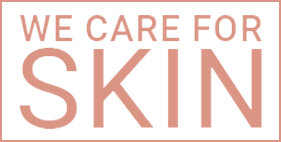The earliest indications of aging begin to appear on the surface of the skin around the age of 20. Fine lines emerge initially, followed by wrinkles, volume loss, and elasticity loss as time passes.
Your skin ages due to a multitude of factors - which are unavoidable. However, there are a number of variables that can cause the skin to age prematurely, all of which can be controlled. The reduction of visible signs of age and the prevention of premature aging can be aided by a holistic approach to lifestyle and skincare.
Understanding how internal and environmental variables influence skin.
The Signs and Symptoms
Wrinkles
Fine lines and wrinkles are the first visible indications of skin aging. Laughter lines, also known as crow's feet, are little, shallow creases that appear around the outer corners of the eyes. These may begin to develop around the age of 30, although everyone ages differently, and how you age is influenced by your genetics and lifestyle. Wrinkles appear on the forehead after these small lines.
Meanwhile, dynamic wrinkles are wrinkles that appear as your skin moves in response to your changing facial expressions. They get more noticeable as you get older, and eventually turn into permanent wrinkles that are evident even when your faces aren't moving. Also, vertical lines between the brows can be caused by frowning.
Loss of Volume
A loss of volume and face features might be difficult to detect. When lipstick starts to leak, it's usually the first indicator of a loss of volume in the lips. Sagging skin, a flattening of the cheekbones, and the impression of a "turkey neck" are all signs of a loss of facial volume. It alters the entire aspect of the face, making it appear negative, unhappy, or exhausted. The nasolabial fold, which forms between the nose and the lips, has also been related to drooping skin and volume loss.
Deep wrinkles and loss of elasticity
Your skin's structure degrades as you age, and it loses elasticity and suppleness. Skin also gets thinner, drier, more 'crepey,' and lacks the shine that you associate with youth. Because your skin is as unique as you are, these changes appear at different ages, although they are most frequent in those aged 50 and over.
How does the skin aging process work?
Skin aging process occurs in all layers of the skin and manifests itself on the surface.
Epidermal Layers
Roughness and dryness are more common as hyaluronic acid concentration decreases, cell turnover slows, and sebum production decreases on the skin's surface. This layer of the skin grows more vulnerable to the sun's rays as it ages. Skin is less effective at self-healing, and a weakened immune system can contribute to an increase in skin infections as well as delayed wound healing.
Dermal Layers
Collagen, one of the skin's building blocks, diminishes about 1% every year beyond the age of 25. Dermal tissue disorganization occurs as a result of this, as well as a decrease in functional elastin. The skin's structure is weakened, making fine lines and wrinkles more prevalent. As you age, your skin's suppleness decreases and deeper wrinkles appear.
In addition, the generation of hyaluronic acid, which is abundant in young skin, slows down as you age, making skin cells less effective at binding in water and making skin more prone to dryness. It also weakens and becomes more susceptible to injury and broken capillaries. Reduced microcirculation means less efficient delivery of nourishment and oxygen to the skin's surface, resulting in a loss of young glow.
Subdermal Layers
The reduction in size and quantity of lipid-storing cells in the adipose layer is the most noticeable alteration in the deeper layers. This causes drooping skin, a loss of volume, and deep creases, as well as hollow temples and cheeks.
Caring for aging skin
Understanding how the skin ages helps you make the best decisions about how to care for it. In separate pages, the three primary symptoms of aging: fine lines and wrinkles, sagging skin and a loss of volume and elasticity, and deep wrinkles are discussed in greater depth.
Preventing premature skin aging and reducing visible indications of age can be accomplished with a holistic approach to lifestyle and skincare.
-
Lifestyle. Because oxidative stress is the most common external cause of skin aging, lifestyle adjustments should aim to reduce its effects.
-
Nutrition. Antioxidants can help to prevent the detrimental effects of free radicals on the skin if you eat a nutritious diet rich in fruits and vegetables. Carrots, apricots, other orange and yellow fruit and vegetables, blueberries, leafy green vegetables, bell peppers, tomatoes, beans and other pulses, fatty fish (such as salmon), and almonds are all known to be high in antioxidants and may even have a skin-protecting impact.
-
Smoking. Smoking hastens the aging process by diminishing suppleness and dullness. Stopping smoking can help to enhance the look of your skin.
-
Skincare. Skin changes with each stage of life, and how it's cared for should mirror those changes. A proper skincare regimen is an important component of a comprehensive approach to addressing all indications of aging, including wrinkles, volume loss, elasticity loss, and associated disorders like age-related dryness or sensitive aging skin. If your skin is in good shape, proper maintenance will keep it that way. If not, a regular regimen can help you get there. Cleanse, care, and sun protection should all be included in a basic skincare program.
Even before you reach the prime age of 25, it is very important to take care of your skin. Because you don’t want sagging skin or wrinkles when you grow old, right?
Discover more about skin aging here.
Article Reviewed by Dr. Zharlah G. Flores, MD, FPDS



